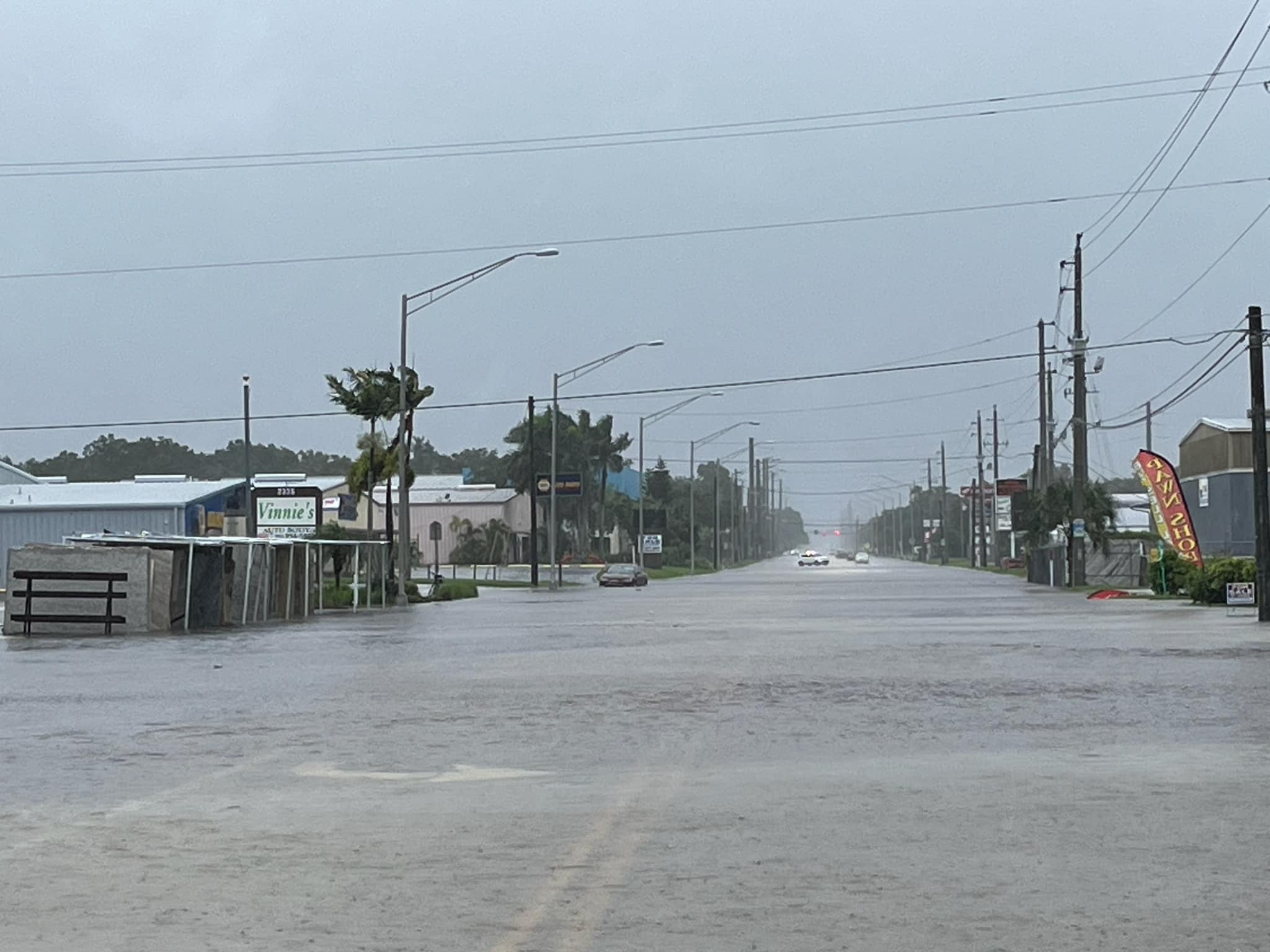What we’re watching: Weekly disaster update, August 5

Editor’s note: The “What we’re watching” blog posts are currently on a summer schedule. A new post will be published on a biweekly basis. The next blog will be published on Aug. 19.
We know all too well that disaster can strike anytime, anywhere in the world. Some disasters make headlines; others do not. Here at the Center for Disaster Philanthropy (CDP), we monitor the status of disasters worldwide and compile a list of the ones we’re tracking weekly, along with relevant disaster-related media coverage.
Here’s what we’re watching for the week of Aug. 5, 2024.
Sudan Humanitarian Crisis: Famine was declared on Aug. 1 in the North Darfur region of Sudan. Due to a civil war (that began April 15, 2023, between the Sudanese Army and the paramilitary Rapid Support Forces) Sudan was already home to one of the world’s fastest unfolding crises in the world.
CDP has launched a Sudan Humanitarian Crisis Fund to support vulnerable, marginalized and at-risk groups to help prevent and address famine, build longer-term solutions, and meet the ongoing and ever-expanding humanitarian challenges from the conflict and complex crisis in Sudan.
Give now to the Sudan Humanitarian Crisis Fund
Some key facts:
- In June, Sudan was declared home to the world’s biggest global hunger crisis with nearly 750,000 people “experiencing catastrophic levels of food insecurity [and] 25.6 million people in crisis levels of hunger.”
- The Famine Review Committee (FRC). They have said that areas of the state near the capital Al Fasher, including in the Zamzam IDP camp are in famine (IPC Phase 5). The Zamzam camp is home to 600,000 people and the FRC says other sites in the Al Fasher area are likely in similar conditions, particularly the Abu Shouk and Al Salam camps. At the end of June 2024, there were 14 areas at risk for famine including Zamzam and the FRC said similar conditions may exist in the other 13 as well.
- In May, Clingendael – the Netherlands Institute of International Relations predicted 5 million starvation deaths by the end of September 2024. This is 15% of the population in Kordofan and Darfur. When hunger reaches the level of famine approximately 1,000 people die every day, most of them children.
- Sudan is now at risk of the world’s deadliest famine since the Ethiopia crisis in the early 1980s, some 40 years ago, which killed at least one million U.S. officials told reporters on August 2, that this famine has the potential to be worse than the famine in Somalia in 2011 that killed at least 250,000 people, mostly children.
- At least 6 million people need humanitarian assistance – mostly nutrition assistance and feeding support. This is 14 million more people than on April 15, 2023, when the civil war started.
- Sudan is home to the world’s biggest displacement crisis. There are a total of 10.9 million people internally displaced persons (IDPs). Of these 7.9 million became IDPs since the war began. Another 2.27 million people have fled the country, straining resources in the region.
- Almost 4.6 million children have been displaced in what UNICEF calls the globe’s largest child displacement crisis. One million children have become refugees and 3.6 million have become IDPs. Due to the ongoing conflict, children are losing out on educational opportunities, and an entire generation of Sudan’s children are exposed to the impact of war and trauma, some as child soldiers. As a result of the conflict, harmful coping mechanisms such as child marriage and reduced food intake are being reported.
In addition to the famine and ongoing humanitarian crisis, flooding has impacted 17,000 people in parts of western and eastern Sudan. Kassala state was hit by heavy rain on July 26 leading to flash floods affecting over 10,700 internally displaced people who had fled recent violence in Sennar State. There were also 5,600 people affected in North Darfur. Additional rain was expected through at least Aug. 7. To learn more about the crisis, the Washington Post recently produced a lengthy discussion program that covers the issues and concerns: Inside the humanitarian and displacement crisis in war-ravaged Sudan. For more information about this crisis, see our ongoing Sudan Humanitarian Crisis profile.
New or Emerging Disasters
Tropical Storm/Hurricane Debby – Southeast U.S.: Debby became a Category 1 hurricane overnight Sunday and made landfall in the Big Bend area of the state – where Florida’s panhandle meets the peninsula – at 7 a.m. eastern Mon., Aug. 5, with winds of 80 mph. Debby’s landfall in Steinhatchee is approximately 20 miles from where Hurricane Idalia made landfall on Aug. 30, 2023. One of the biggest concerns initially is for storm surge, as up 10 ft was expected. Another issue is power outages and as of 8 a.m. central there were almost 300,000 customers with power. The most common scale for measuring hurricane strength – the Saffir-Simpson scale – is based solely on wind speed. This happened during Hurricane Florence in 2018 when a small Category 1 hurricane stalled and brought devastating flooding to South Carolina. CNN said, “The main threat will be flooding, both from storm surges up to 10 feet and heavy rainfall. Freshwater flooding, which is caused by rainfall, has become the deadliest aspect of tropical systems in the last decade, according to research conducted by the — a threat made more dangerous as the world warms from fossil fuel pollution.” Debby is forecast to bring 16-20 inches of rain (some local amounts up to 30 inches) to the South Carolina coast from the southernmost point of the state up to the Charleston area. Debby is predicted to enter Georgia Monday afternoon and exit Tuesday overnight. It is anticipated that it will remain in South Carolina through Friday, dependent upon forward motion. States of emergency have been declared in Florida, Georgia and South Carolina. For more about this year’s tropical events, see our 2024 Atlantic Hurricane Season disaster profile. Wildfires – Multiple locations Canada and U.S.: Dozens of large fires are burning in the western part of the U.S. and Canada. For a more detailed breakdown, please see our 2024 North American Wildfires Profile
- California – The Park Fire became the fourth-largest wildfire in California’s history when it exceeded 2020’s SCU Lightning Complex over the weekend. As of Aug. 4, at 5 p.m. Pacific, it had reached 401,393 acres with just 30% containment. At 600 square miles, this is 13 times the size of San Francisco or a bigger area than New York City or Los Angeles. Butte County has been the hardest hit in terms of destruction. With 94% of structure assessments done, Cal Fire said, “567 homes or other structures were destroyed in the blaze, with 427 of them in Butte County. Of the 51 structures damaged by the Park Fire, 46 were in Butte County.”
- Colorado: Several fires were burning on Colorado’s Front Range, including one that took the life of an individual on Wed., July 31. The Alexander Mountain Fire was at just under 10,000 acres on August 4.
- Oregon: Nearly one million acres have burned in Oregon’s current 25 fires, including four that are currently over 100,000 acres each. The largest is the Durkee fire at 294,690 acres with 80% containment.
- Alberta, Canada: One-third of the town of Jasper has burned in Jasper National Park’s largest wildfire in over 100 years. It is expected that the fire will continue to burn for months. The fire remains out of control. While the fire is out in the town itself, all residents and tourists remain evacuated, and no one knows when they will be allowed to return. The fire has been enhanced by lots of fuel and dry, hot weather conditions. A 24-year-old firefighter has been killed. The fire has burned about 96,000 acres (39,000 ha).
Landslides – India: Monsoon rains triggered landslides on July 30 in the Wayanad district of Kerala state in Southern India. This area is popular with tourists because of its scenery, and tea and spice plantations. According to SPHERE India, “as of 30 July, 270 people died, 378 are still missing, 214 have been injured and more than 8,500 people have been evacuated in 85 relief camps.” This was the worst disaster in the state since the 2018 floods.
Famine Issue Insight
This issue insight provides information about famine, the needs that may arise, how to help and educational resources.

Previous/Ongoing Disasters
Wildfires – Maui: The first anniversary of the wildfires in Lahaina and other areas of Maui is Aug. 8. The island’s recovery to date highlights numerous issues that are typical after a big disaster, especially when the economy is highly dependent upon tourism and there are many environmental issues at play.
- The Hawaii State Rural Health Association’s Maui Together program interviewed more than 2,000 residents of the county – more than half from the fire-stricken area. While the full report is coming soon, early results show that almost half are having issues with finances since the Lahaina fire, including two-thirds who had problems affording groceries. Almost half of the fire survivors are thinking of leaving, compared to 39% of county residents.
- There is enough housing but much of it is tied up in short-term rentals for tourists. This proved to be a real challenge in the months after the fire when displaced residents from Lahaina could not find or afford housing causing them to experience housing instability and to move frequently.
- Focus has been on residents over businesses. However, employment is a key factor in helping people return home. As of late July, no commercial permits had been applied for, let alone issued, in the affected area. CDP Grantee Partner, Honolulu Civil Beat writes, “Most of the 140 or so destroyed commercial and public buildings, and all of the Front Street properties, are in a special management area, established by the Legislature in 1975 to protect shorelines. Construction and land use in the SMA requires special permitting that can take a year or more under normal circumstances.”
- Tourism is down, but except for Lahaina itself, all of Maui county is open for business. USA Today says, “Maui’s economy highly depends on tourism, with about 70% of every dollar generated on the island involving it. In the past year, the island has since seen less travelers – and those financial losses have reverberated throughout the island.” This meant a negative impact on the state’s GDP.
- According to the State of Hawaii Department of Commerce and Consumer Affairs, 316 commercial properties claimed $1.2 billion in insured losses from the fires.
- A $4.037 billion settlement involving seven defendants will resolve all tort claims from the wildfires (450 lawsuits brought by approximately 2,200 parties). The seven defendants are the State of Hawai‘i, the County of Maui, Hawaiian Electric, Kamehameha Schools, West Maui Land Co., Hawaiian Telcom and Spectrum/Charter Communications. While the agreement still needs court approval, generally settling all lawsuits after a disaster takes years. Governor Josh Green said in a statement, “it will be good that our people don’t have to wait to rebuild their lives as long as others have in many places that have suffered similar tragedies.”
- And finally, CDP grantee partner Honolulu Civil Beat provides an informative summation on the disaster: The Maui wildfires were massive. These numbers help us comprehend them.
In addition to the disasters listed above, we actively monitor the following disasters or humanitarian emergencies. For more information, see the relevant disaster profiles, which are updated regularly.
- 2024 East Africa Flooding and Cyclones
- 2024 U.S. Tornadoes Profile
- Gaza-Israeli Humanitarian Crisis
- Horn of Africa Hunger Crisis
- Afghanistan Humanitarian Crisis
- 2024 US Floods
- Haiti Humanitarian Crisis
Complex Humanitarian Emergencies – Nigeria
Many places worldwide are experiencing emergencies caused by conflict, climate change, drought, famine, economic challenges and other conditions that combine to create a complex humanitarian emergency (CHE). CDP maintains complete profiles on several CHEs, and what CDP considers Level 1 CHEs are profiled in this weekly blog post and tracked.
Nigeria is facing its worst economic crisis in decades. The crisis is marked by inflation, a currency in free-fall and millions of people struggling to buy food. Mass demonstrations on Aug. 1 over the economic situation led to curfews, hundreds of arrests and several dead. A bombing in Borno state on July 31 killed 16 people. Although no one has claimed responsibility, Boko Haram is suspected. The militant Islamist group has launched an insurgency in the region since 2009. In the past 15 years, the insurgency has resulted in more than 35,000 people killed and 2.6 million displaced in the region. The Government and humanitarian partners have distributed agricultural inputs to support growers, and other programming continues. However, food insecurity persists as agricultural activities are disrupted by conflict in the northeast, northwest and north central parts of the country. Also, staple food prices continue to soar above last year. Repeated disasters such as flooding exacerbate the humanitarian situation. In CHE contexts such as Nigeria, CDP recommends greater investments in local organizations while focusing on strengthening resilience so that communities are able to withstand and recovery quickly from multiple shocks. Nigeria is facing its worst economic crisis in decades. The crisis is marked by inflation, a currency in free-fall and millions of people struggling to buy food. Mass demonstrations on Aug. 1 over the economic situation led to curfews, hundreds of arrests and several dead. A bombing in Borno state on July 31 killed 16 people. Although no one has claimed responsibility, Boko Haram is suspected. The militant Islamist group has launched an insurgency in the region since 2009. In the past 15 years, the insurgency has resulted in more than 35,000 people killed and 2.6 million displaced in the region. The Government and humanitarian partners have distributed agricultural inputs to support growers, and other programming continues. However, food insecurity persists as agricultural activities are disrupted by conflict in the northeast, northwest and north central parts of the country. Also, staple food prices continue to soar above last year. Repeated disasters such as flooding exacerbate the humanitarian situation. In CHE contexts such as Nigeria, CDP recommends greater investments in local organizations while focusing on strengthening resilience so that communities are able to withstand and recovery quickly from multiple shocks.
Join us this Thursday, Aug. 8
Aug. 8: Feminist humanitarian funding approaches in climate and disaster crises

What We’re Reading
- Do you rent? You may be more vulnerable to climate-driven disasters – NPR: “A growing body of research warns that renters are particularly vulnerable after disasters, in part because they are less likely to have relevant insurance and may not receive adequate assistance from the government in the immediate aftermath.”
- Seeking real change: South Jackson combats legacy of white flight, inequity and blight – Mississippi Free Press (CDP Grantee Partner): “Systemic inequities have intertwined over many decades to create a downward, hard-to-win cycle such as for the Black people of South Jackson … 54 years after forced integration, that cycle keeps spinning in Jackson in larger and larger concentric circles. The jobs, the pay, the tax base, the home values, the public resources and services and the remaining businesses just aren’t enough to form a healthy ecosystem in which all the needed elements grow and thrive.”
- Unregulated oilfield power lines are suspected of sparking Texas wildfires – Texas Tribune (CDP Grantee Partner): “No state agency is taking responsibility for making sure the privately built lines that power many oil and gas sites are safe. Such lines have been blamed for sparking two recent Panhandle fires.”
- Data shows hurricanes and earthquakes grab headlines but inland counties top disaster list – Associated Press: The big “named hurricanes” and other events tend to grab a lot of attention, but a summary of 713 FEMA declared disasters created by Rebuild by Design and New York University shows that “eight of the nine counties with the most federal declared disasters since 2011 — more than a dozen each — are in Kentucky, with the one in Vermont. These counties have four to five times the number of disasters as the national average of three in the past 13 years.”
Something fun: Have you been tuned into the Olympics? Paris decided to take the Opening Ceremony outside, but Mother Nature decided not to cooperate, but rain (or “Irish weather” as one athlete dubbed it) couldn’t dampen the spirits of attendees or athletes.
